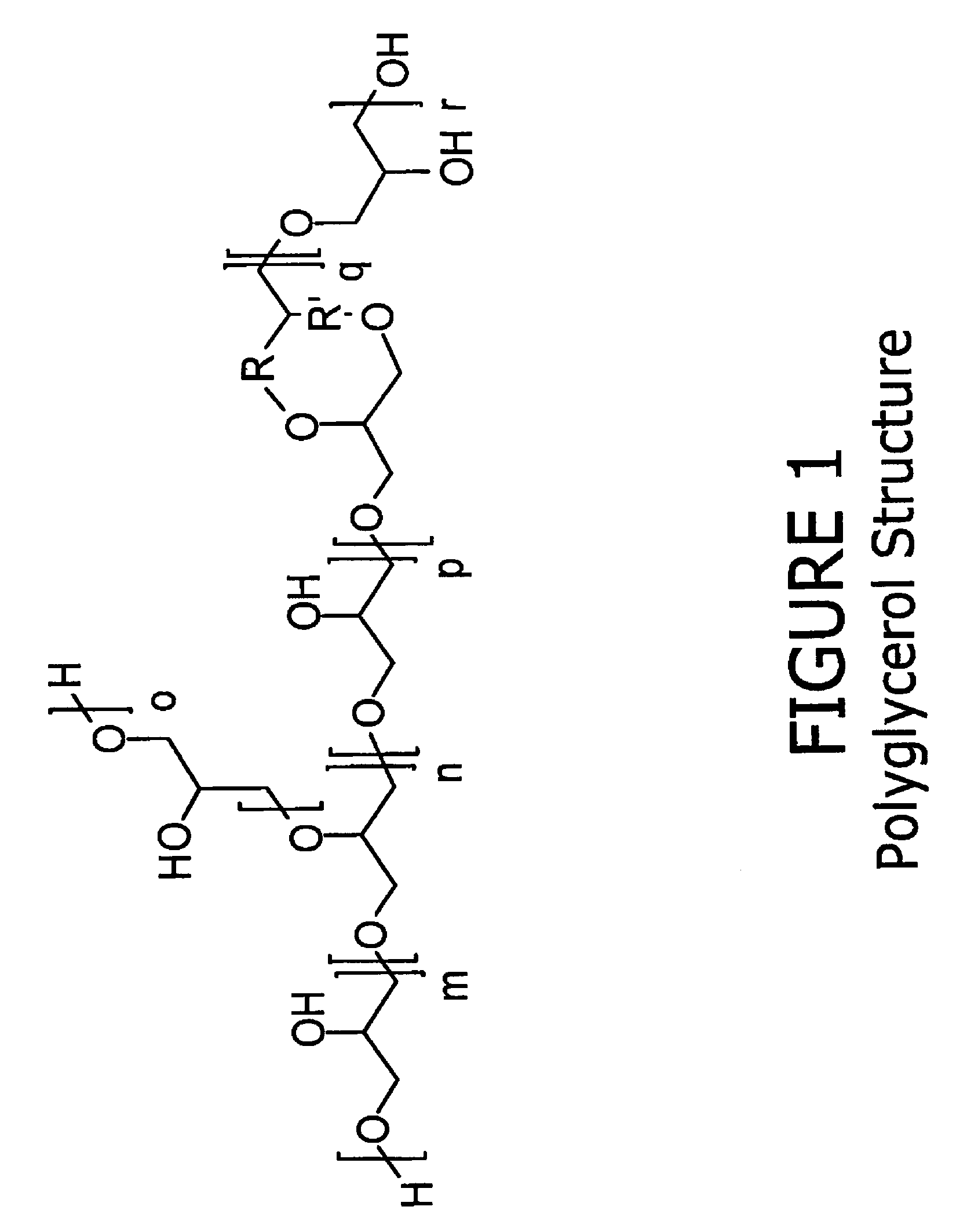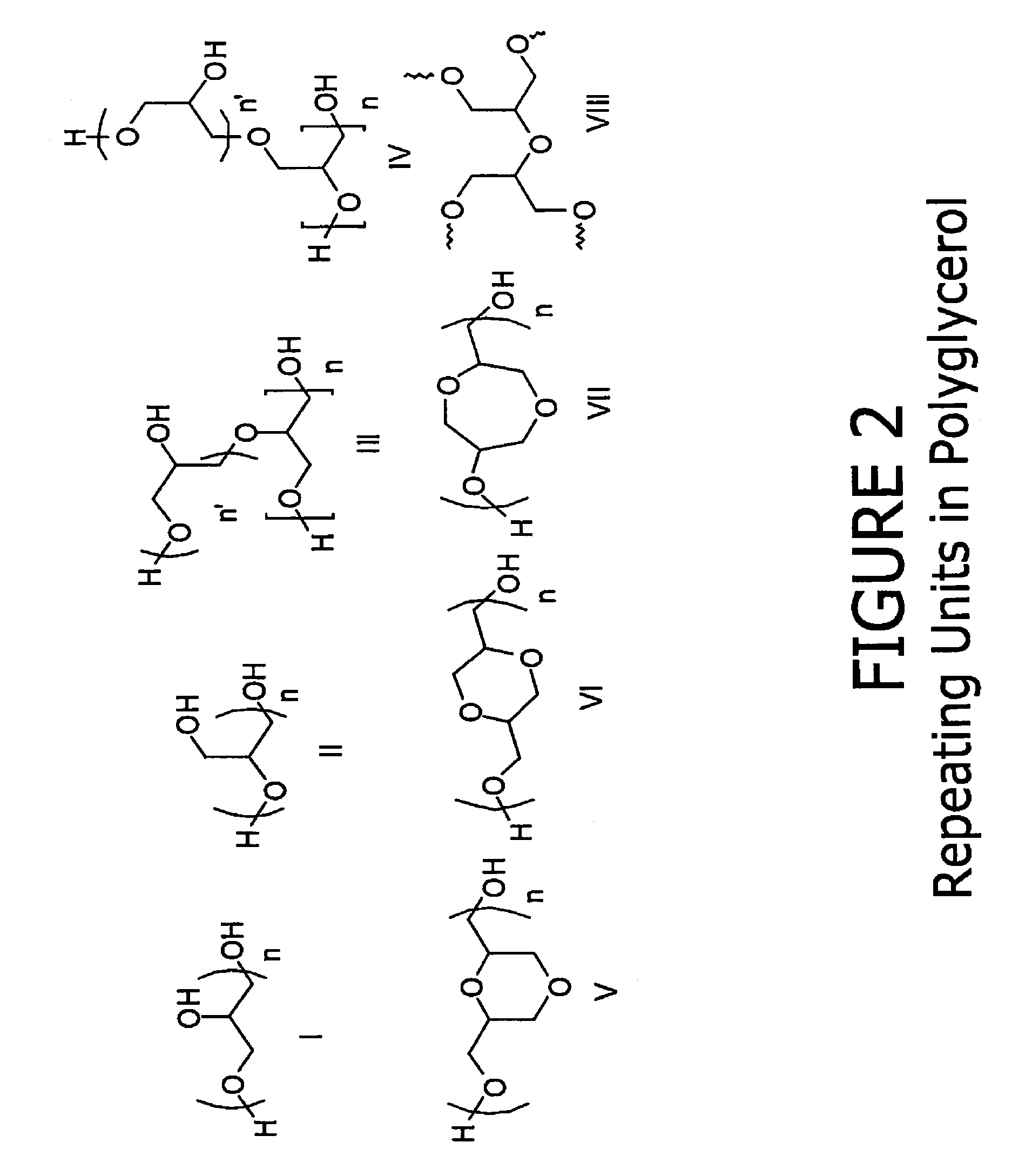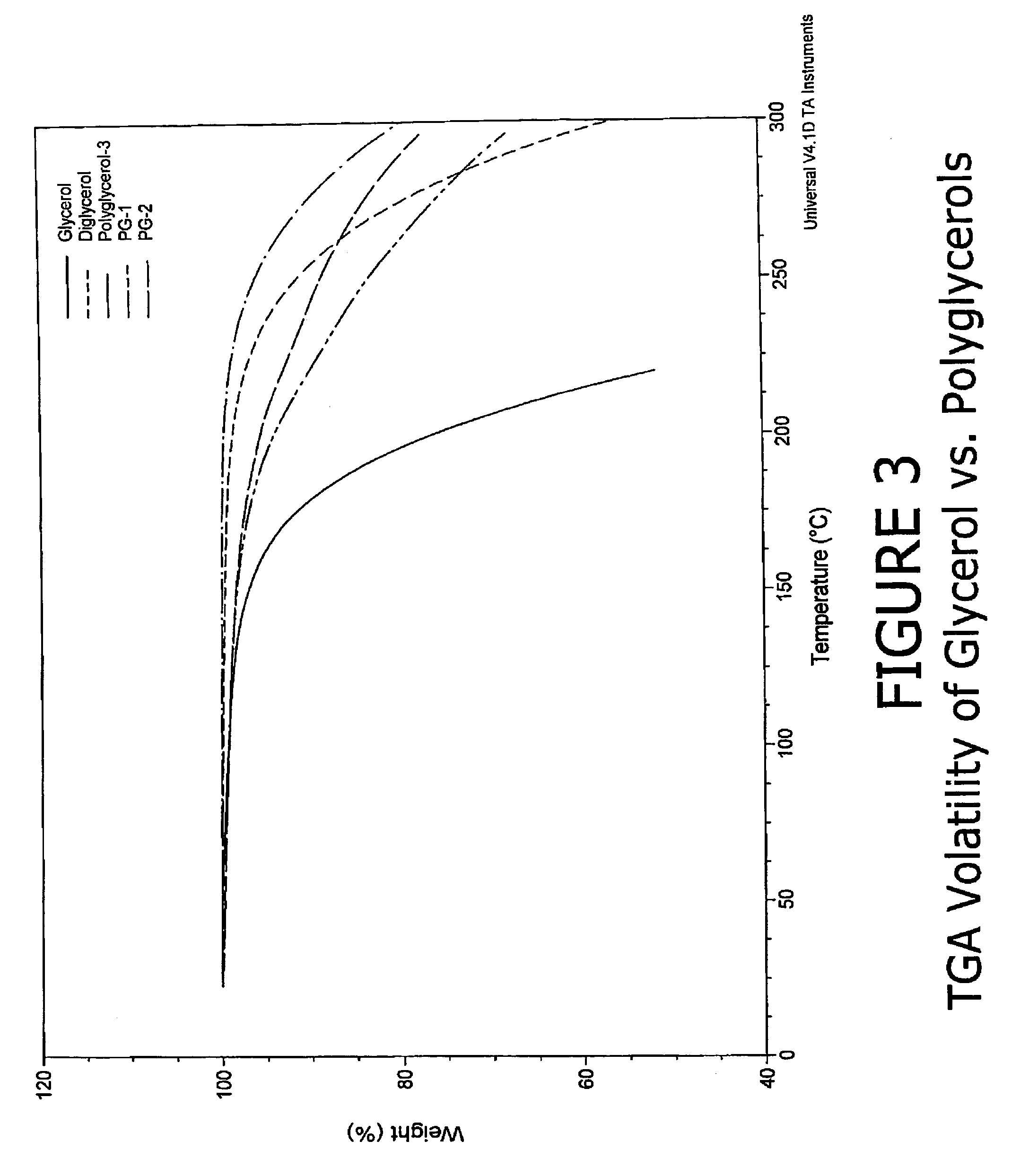Modifying agent for yankee coatings
a technology of modifying agent and coating, which is applied in the field of matter composition, can solve the problems of low moisture creping not being widely practiced, blade wear, and loss of adhesion,
- Summary
- Abstract
- Description
- Claims
- Application Information
AI Technical Summary
Benefits of technology
Problems solved by technology
Method used
Image
Examples
example 1
[0041]General procedure for the production of polyglycerols: A reaction mixture of glycerol (500.0 parts) and NaOH or KOH solution (3 to 10% by weight of active relative to the total weight of reaction solids) was stirred and gradually heated up to 230 to 260 degrees Celsius under particular inert gas flow rates. The reaction mixture was stirred at this temperature for a desired reaction time (in hours), and in-process samples were drawn after two hours and every one or two hours thereafter for product characterizations. Nitrogen flow rates at 0.2 to 8 mol of nitrogen per hour for each mol of glycerol or vacuum pressures less than 760 mm Hg were applied starting from reaction time between 0 to 4 hours to the end of the reaction. The polyglycerol products were used for the application directly or after dilution with water, with or without pH adjustment.
example 2
[0042]The volatility of polyglycerol samples was determined by thermogravimetry (TGA). FIG. 3 is the overlay of TGA weight-loss curves for glycerol and various polyglycerol samples. Table 2 lists the temperature at which 5% weight-loss occurs in the samples. The 5% weight-loss of glycerol occurs at 162° C., whereas the 5% weight-loss of polyglycerol samples occurs at significantly higher temperatures. This indicates that all of the polyglycerol samples are less volatile than glycerol. About 20-40 mg of samples were analyzed by TGA (TA Instruments, New castle, DE) at a heating rate of 10° C. / min in an air atmosphere (flow rate: 90 ml / min).
[0043]
TABLE 25% weight-loss temperature determined by TGASampleTemperature (° C.)Glycerol162Diglycerol235Polyglycerol-3255PG-1192PG-2204
example 3
[0044]The lower volatility of polyglycerol compared to glycerol in dilute aqueous solutions is illustrated in FIG. 4. As the modifier concentration becomes more dilute, the advantage of polyglycerol over glycerol becomes more apparent. At 1% modifier concentration, practically 100% of the glycerol modifier is lost after drying at 105° C. for 16.5 hours. In contrast only 10% of the polyglycerol modifier is lost.
PUM
| Property | Measurement | Unit |
|---|---|---|
| glass transition temperature | aaaaa | aaaaa |
| weight percent | aaaaa | aaaaa |
| weight percent | aaaaa | aaaaa |
Abstract
Description
Claims
Application Information
 Login to View More
Login to View More - R&D
- Intellectual Property
- Life Sciences
- Materials
- Tech Scout
- Unparalleled Data Quality
- Higher Quality Content
- 60% Fewer Hallucinations
Browse by: Latest US Patents, China's latest patents, Technical Efficacy Thesaurus, Application Domain, Technology Topic, Popular Technical Reports.
© 2025 PatSnap. All rights reserved.Legal|Privacy policy|Modern Slavery Act Transparency Statement|Sitemap|About US| Contact US: help@patsnap.com



